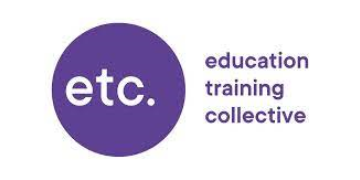Where is the evidence that academy “freedoms” are the cause of improved school standards?
When I was chief executive of The Learning Trust, I designed and oversaw the academies programme in Hackney. The first academy was Mossbourne-sponsored by the late Sir Clive Bourne. Seven academies followed – all of which are very successful and popular.
But as a long-term supporter of academies, the persistent myth that academy schools achieve better results because of their “freedoms” from local authority control frustrates me.
Proponents of this myth churn out the line that autonomy over curriculum, budgets and staffing drives improvement. However, evidence suggests this narrative is exaggerated, misleading and often contradicted by outcomes.
Curriculum concerns
In fact, it is not particularly evident that academies have created challenging and exciting curricula. Most tend to follow the national curriculum.
Yes, that curriculum is in desperate need of a rethink. And yes, the schools bill will mean trusts have to follow what comes out of the Francis review. But is it a loss freedom if that freedom isn’t exercised?
The real threat may be a lack of flexibility, but even that doesn’t necessarily follow. The review could result in a more focused, less prescriptive national curriculum.
The other challenge here is a shift in the curriculum’s values. But if the new one focuses on the skills and knowledge pupils need in a rapidly changing world of work and learning (leaving the delivery and breadth to our skilled teachers), then that’s a modern national curriculum all state-funded schools should get behind.
Performance matters
Meanwhile, a 2017 Education Policy Institute (EPI) report found that while some academies perform well, many show no significant improvement compared to similar local authority schools. Some multi-academy trusts (MATs) excel, but others underperform—just like any other schools.
Academies are slightly more likely to be rated ‘outstanding’ (19 per cent, against 14 per cent for local authority secondaries in 2023). However, they are also more likely to be rated ‘inadequate’ (six per cent, against three per cent for local authority schools).
Indeed, just last October, The Times reported that out of 321 schools rated ‘inadequate’, 271 were academies. So, 84 per cent of the schools causing concern to the DfE last term were academies.
MATs are in a similar position. EPI research (2017-2020) found that only 39 per cent of MATs performed above the national average for pupil progress (Progress 8), while 34 per cent were below average.
The EPI also found MATs vary widely. Some (like Harris, Ark, and Outwood Grange) perform well above average, while others perform worse. London academies (often part of high-performing MATs) tend to do better, while some northern academies struggle.
In addition, 2023 National Audit Office report found that some MATs prioritise financial sustainability over educational quality, with little accountability when things go wrong.
Operational affairs
Finally, while academies have some operational flexibility, many are bound by strict MAT policies, limiting real autonomy. Is this “freedom”?
The debate between alignment and autonomy is a live wire in many trusts.
A 2021 University of Bath study found that teachers in academies often face more bureaucratic constraints due to centralised MAT directives. The supposed “freedom” from local authorities often just replaces one form of control with another.
In addition, academies operate outside democratic oversight, with parents and communities having little say in their governance.
In 2023, the Public Accounts Committee warned that the DfE struggles to monitor academy performance effectively, raising concerns about transparency. While government support up to now has focused on converting schools to an academy, and not driving improvement.
This is a kind of freedom, but is it the kind we want?
One “freedom” has been used widely. The salaries of some trust chief executives are eye-watering. According to the Taxpayers Alliance last month, the top ten salaries of MAT leaders added up to a fraction under £3 million.
One leader of a trust of just over 50 schools receives almost the combined salaries of the director of finance, the director of children’s services and the chief executive of some local authorities responsible for up to 150 schools.
The idea that academy “freedoms” are the magic bullet for school improvement has no compelling evidence base. While some academies thrive, others flounder—just like any schools group.
Real progress comes from strong leadership and teacher expertise. But if they are magic bullets, then why not ensure all schools have those “freedoms”? Or can’t we afford the salaries?











Thank you for these compelling thoughts and deep insights.
This is what is needed.
Too many people are going into leadership without the necessary experience and then relying on others to get by.
I mean teams, this in itself places huge pressures on individuals.
A team is like a cog in the wheel. How can such salaries command one individual to do the job, it is a huge ask.
We need to rethink leadership and maintain a realistic expectation of Trust leadership.
Many others in the chain are doing the work and this is not always recognised.
Also have we asked the kind of culture we are creating with this type of allegiance to the CEO and the central team?
Central teams are more powerful than the headteacher not that I like using the word powerful, but many a headteacher has left the job because they have been forced out because of ideology but we came into the job because we wanted to be idealistic for our young people.
The days of innovative headship are long gone and we will be the worst off for this in the future.
I value the freedoms I have to use my experience, instincts and a deep respect for our communities who choose to send their children to our schools.
Rooted in a deep moral compass to do the best for every single child.
Caring and talent spotting with our team to help young teachers aspire to leadership.
Cultivating the next generation of teachers.
I still love jumping out of bed to get to work, thank goodness I still feel this enthusiasm for the past 43 years!!!